Jacques Goldstyn’s Letters to a Prisoner
 August 16th, 2017 by jules
August 16th, 2017 by jules
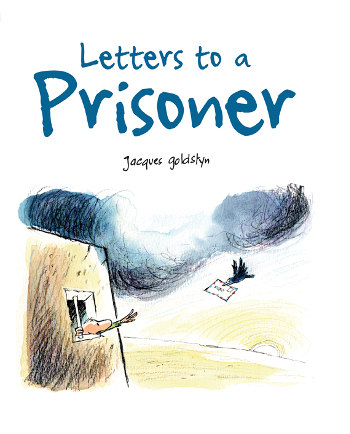 Just earlier this year (here in April), I wrote about Jacques Goldstyn’s Bertolt, released by Enchanted Lion Books. I was pleased to see that he has another translated title this year on American shelves (translated from the French, as Jacques lives in Montreal). The wordless Letters to a Prisoner (Owlkids Books), originally published in 2015 as Le prisonnier sans frontières, will be on shelves in mid-September.
Just earlier this year (here in April), I wrote about Jacques Goldstyn’s Bertolt, released by Enchanted Lion Books. I was pleased to see that he has another translated title this year on American shelves (translated from the French, as Jacques lives in Montreal). The wordless Letters to a Prisoner (Owlkids Books), originally published in 2015 as Le prisonnier sans frontières, will be on shelves in mid-September.
The story, told entirely via Goldstyn’s spacious loose-lined pen and watercolor illustrations, begins with peaceful protesters. Goldstyn depicts the messages on the signs they hold via abstract symbols: Their signs have red dots, and the gun-toting military they oppose are in all blue and speak in blue squares. When violence breaks out, one man is thrown into prison. He dreams of freedom and seeing once again the child with whom he protested (I assume it’s his daughter), and he marks the days of his prison stay on his wall. When a bird brings him a letter, the guard rips it up. The persistent bird brings many more, yet the guard carries them all away and sets them afire. One striking spread shows “We are with you” in the smoke, rendered in over ten different languages. Clearly, the prisoner has become a hero of sorts, the recipient of a letter-writing campaign. The rest of the book leaves the prison walls, Bertolt showing readers the support the prisoner has from all walks of the world. And I can’t very well give away the ending, but it’s a moving one.
Goldstyn closes with a note about Amnesty International’s Write for Rights letter-writing campaigns and its mission to “write to a person who [has] been unjustly imprisoned for his or her ideas.” He even encourages readers to learn more and to participate in a Write for Rights event — or organize their own.
It’s an inspiring, thought-provoking story about the power of the written word, especially fitting for anyone addressing social justice issues with children. Here are a few more spreads …
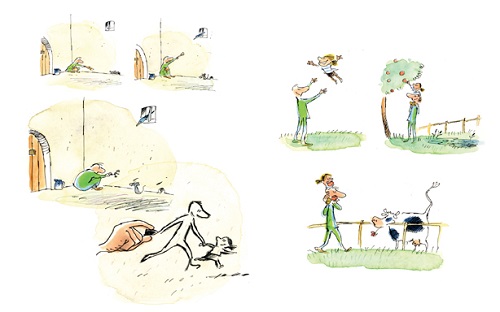
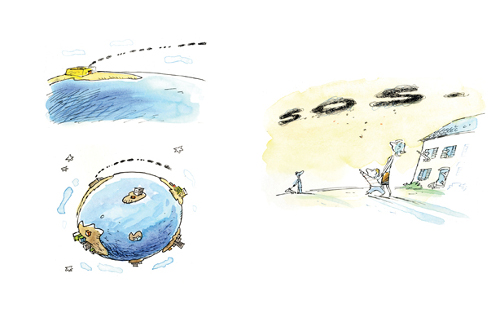
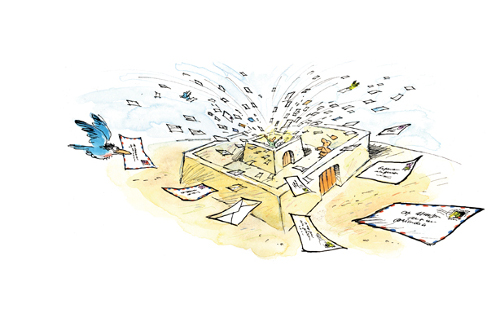
LETTERS TO A PRISONER. Text and illustrations © 2015 Jacques Goldstyn. This edition published in 2017 by Owlkids Books. Images reproduced by permission of the publisher.
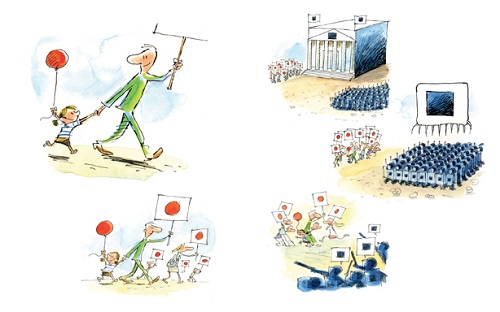

Once again, leave it to the Europeans to write a children’s book about political dissidents, as Americans ponder the “right” age to talk to children about racism and haven’t even begun to come to the grips with fascism… We definitely must step aside for countries with a much longer history – of everything – to show us the way here. This looks haunting and sad and also a good conversation starter.
It is, indeed, a great conversation starter, I think. And yeah, we need to be having these conversations in schools. So badly.